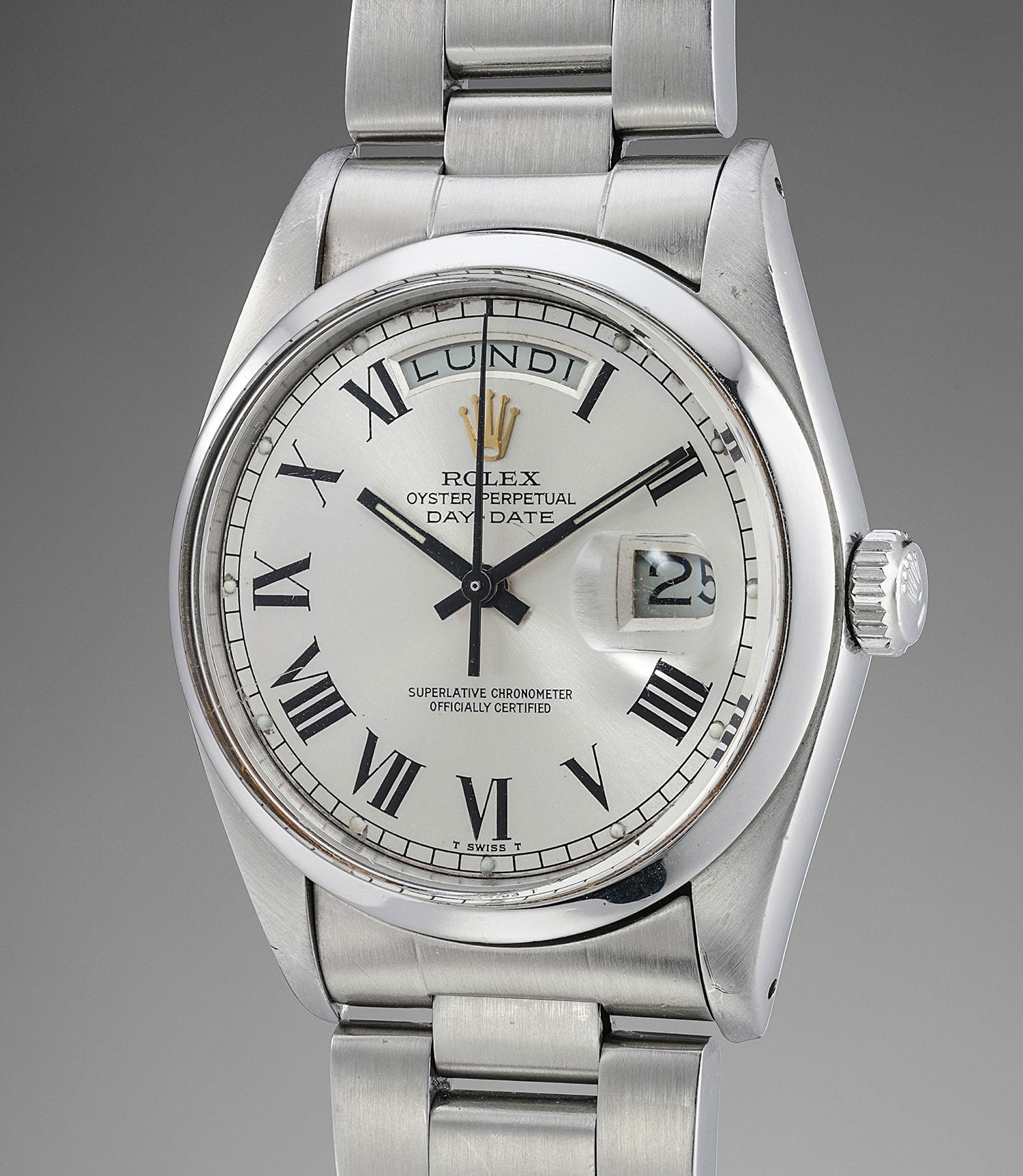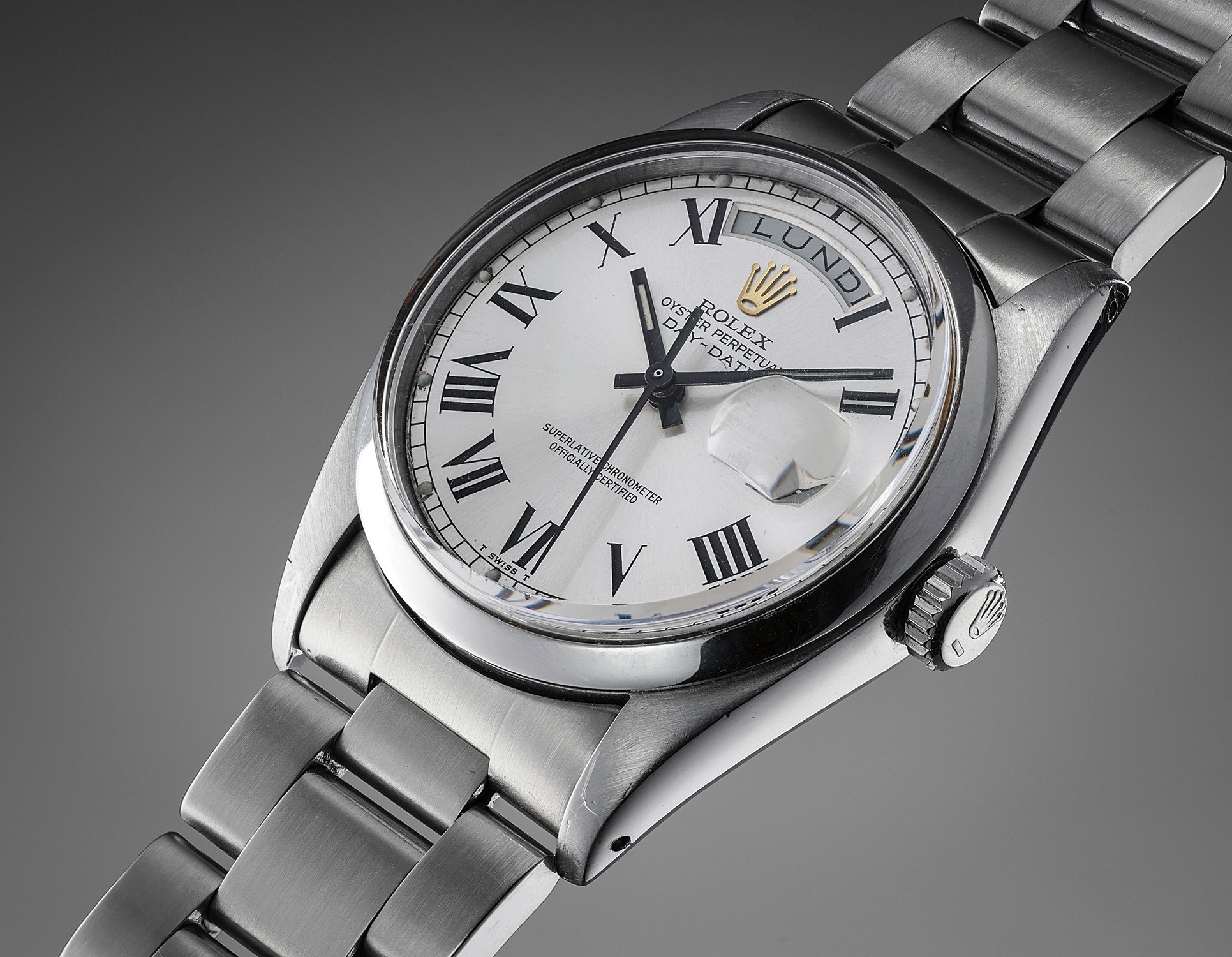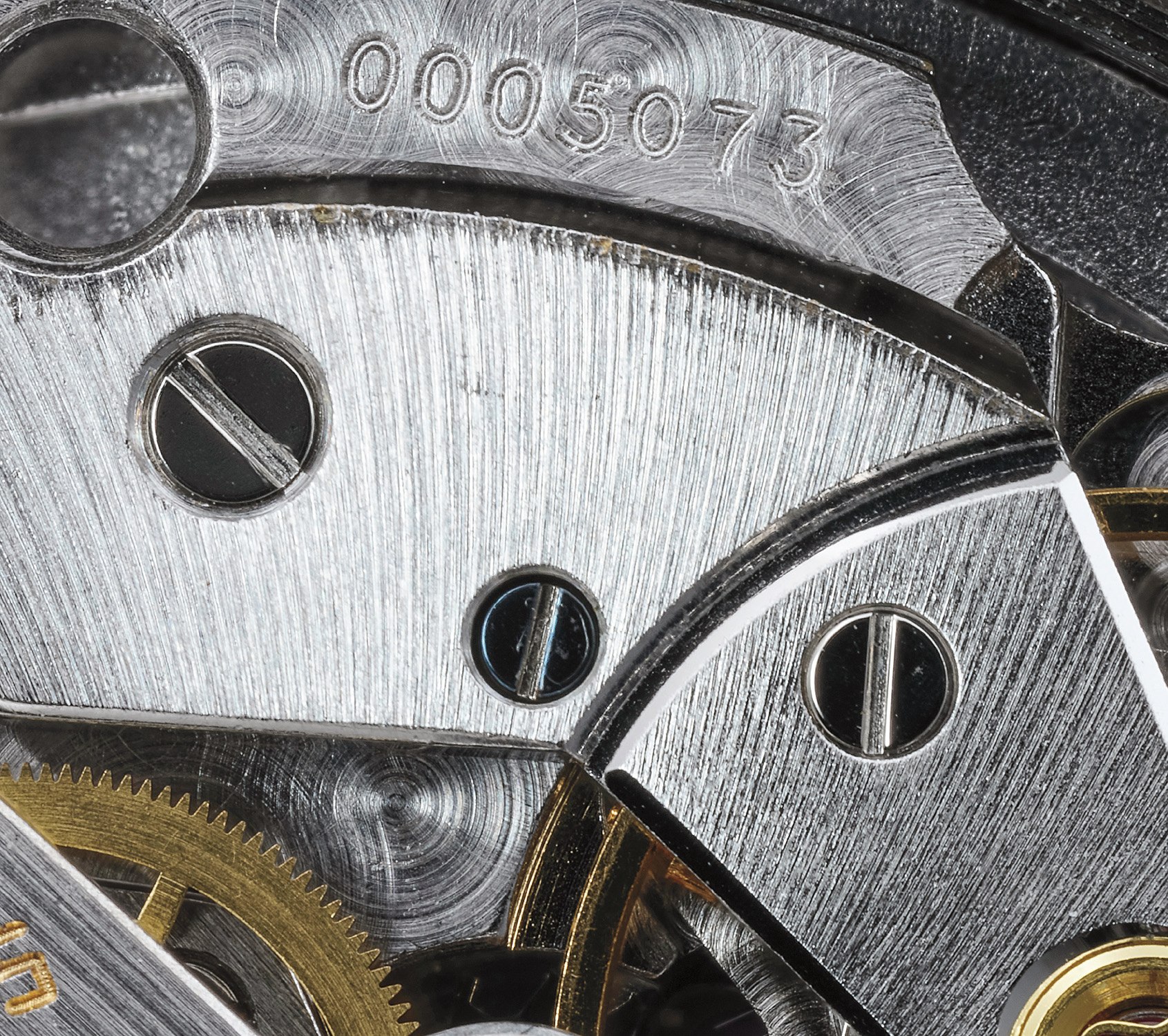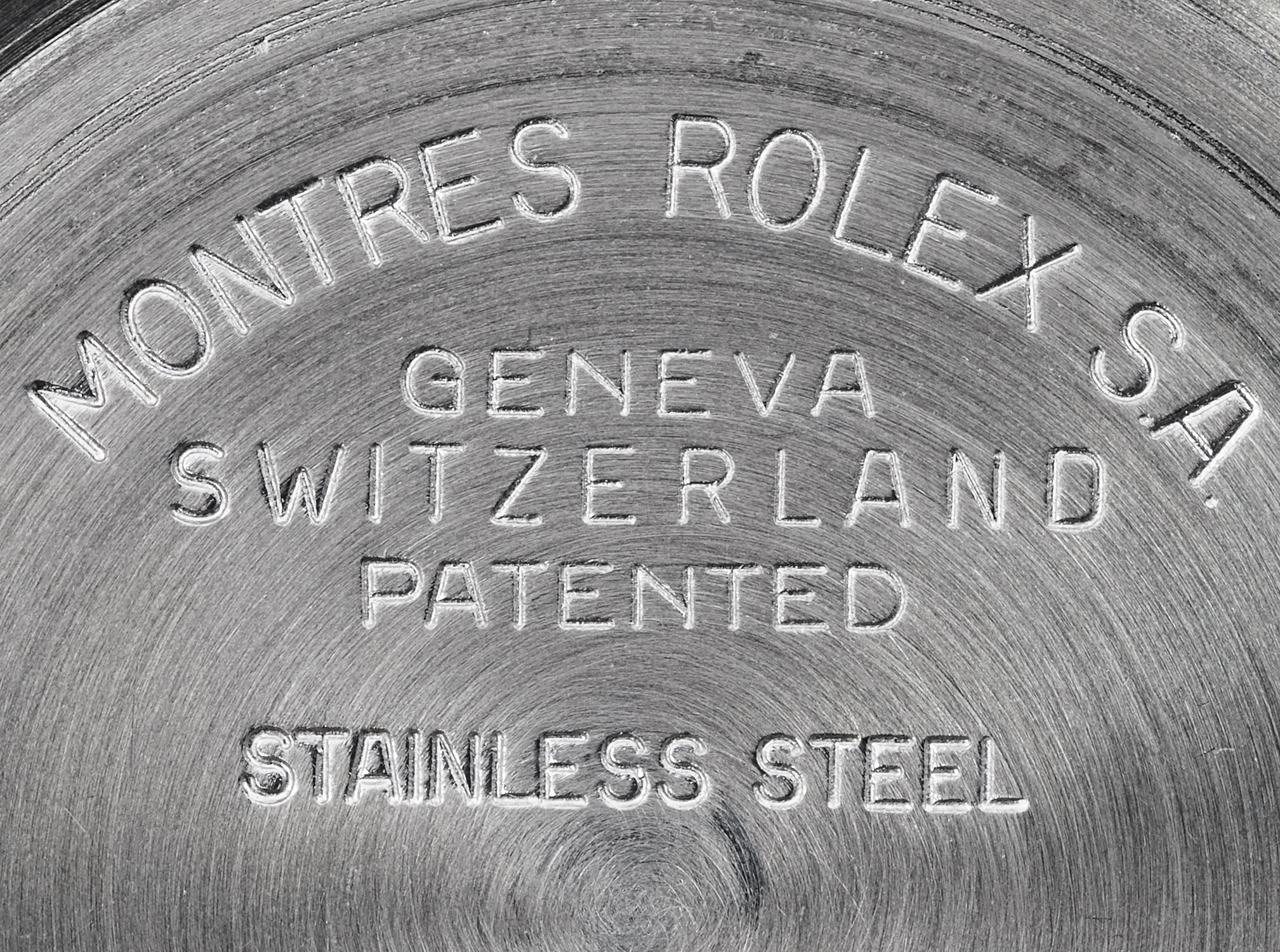











25
Rolex
Day-Date
An exceedingly rare and important stainless steel prototype calendar wristwatch with bracelet
Full-Cataloguing
Rolex has often publicly stated that the Day-Date model was only cased in previous metals such as yellow gold, pink gold, white gold or platinum. The model has been fitted with a plethora of dials, ranging from those set with delicate hard stone, to ones heavily embellished with gemstones.
This history of the Day-Date is marked by some important milestones:
1955 - The "Day-Date" patent is registered prior to the release of the model. The name was officially registered on July 23, 1955.
1956 - The Day-Date is launched at the 1956 International Basel Fair. Bearing the reference number 6511, it most notably features a fluted bezel. The "President" bracelet is also introduced alongside the Day-Date model.
1957 - The reference 6511 is replaced by reference 6611, which features an improved caliber 1055, allowing the model to obtain a "COSC" certification
1959 - Reference 1803 is launched, and is one of Rolex's longest-running references in production
1977 - A sapphire crystal is introduced to the Day-Date line. The new model bears the reference number 18000. The caliber 1556 is now upgraded to the caliber 3055, which introduced the quick date mechanism. Furthermore, balance speed is increased to from19,800 bph to 28800 bph.
1988 - The double quick set calendar is introduced with the caliber 3155.
2008 - Rolex releases the Day-Date II as a modern update.
Today, there are a handful of Day-Dates so rare that their very existence bewilder the most seasoned of collectors. Known only to the horological cognoscenti, they are the antithesis of the opulent Day-Dates we know so well today. While the reference 6611 in stainless steel is arguably the "holy grail" of all Day-Dates, this prototype reference 1803 in stainless steel comes a close second.
It is our understanding that the present watch was made to be used in the Rolex laboratory to test new the new Day-Date caliber 3055. Given the technical nature of this watch, it makes sense that Rolex did away with aesthetic flourishes, such as a ribbed bezel, giving this timepiece a decidedly sober and singular appearance. The Day wheel is French, which is fitting, given that this watch was used as a trial piece in Switzerland. The case back bears all the signs of an undoubtedly correct Rolex factory component, such as the "Montres Rolex S.A. Geneva Switzerland" stamping, as well as the crisp milled satin finishes in the center. An important detail is the "STAINLESS STEEL" script, indicating that the Rolex did indeed create stainless steel Day-Date cases.
This timepiece most notably does not have a reference or serial number, as it was never manufactured for commercial purposes. The movement number, 0005073, is incredibly close to another known example illustrated in 100 Superlative Rolex Watches by John Goldberger, which bears the movement number 0004547 and is almost identical in appearance to the present example. The other known example also does not bear any serial or reference numbers.
The current owner bought this watch from a senior Rolex watchmaker who received it from his superior on the occasion of his retirement. The watchmaker was personally involved in the development and testing of the present caliber, and had personally serviced the watch himself.
Rolex
Swiss | 1905Founded in 1905 England by Hans Wilsdorf and Alfred Davis as Wilsdorf & Davis, it soon became known as the Rolex Watch Company in 1915, moving its headquarters to Geneva in 1919. Like no other company, the success of the wristwatch can be attributed to many of Rolex's innovations that made them one of the most respected and well-known of all luxury brands. These innovations include their famous "Oyster" case — the world's first water resistant and dustproof watch case, invented in 1926 — and their "Perpetual" — the first reliable self-winding movement for wristwatches launched in 1933. They would form the foundation for Rolex's Datejust and Day-Date, respectively introduced in 1945 and 1956, but also importantly for their sports watches, such as the Explorer, Submariner and GMT-Master launched in the mid-1950s.
One of its most famous models is the Cosmograph Daytona. Launched in 1963, these chronographs are without any doubt amongst the most iconic and coveted of all collectible wristwatches. Other key collectible models include their most complicated vintage watches, including references 8171 and 6062 with triple calendar and moon phase, "Jean Claude Killy" triple date chronograph models and the Submariner, including early "big-crown" models and military-issued variants.